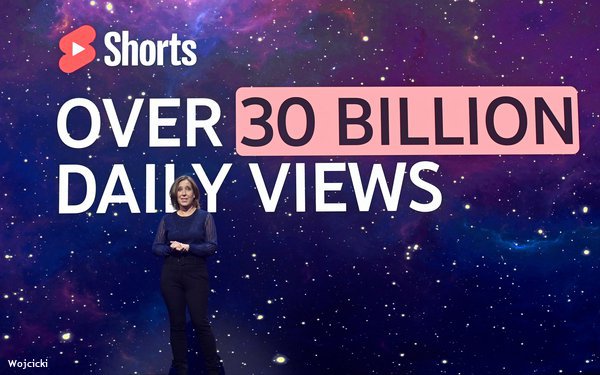
At YouTube’s Brandcast presentation for brands
and agencies, the focus turned to the video platform’s creators, its scale across internet TVs, and a new solution that will allow advertisers to set limits on ad frequency.
For the
first time, YouTube held Brandcast during upfront week. “The audiences you most care about are coming to YouTube to watch content,” CEO Susan Wojcicki told attendees at the event on
Tuesday.
She cited Nielsen’s estimate that YouTube reached 230 million people age 18 and older in the U.S. in October 2021 overall, calling YouTube “the mainstream.”
There were plenty of featured creators and artists such as Kyle Hanagami, Mark Rober, Marques Brownlee, Ninja, Patrick Starrr, Scary Pockets, and MrBeast, Jimmy Donaldson, a popular creator with
more than 95 million subscribers.
advertisement
advertisement
Allan Thygesen, Google’s President of Americas, stressed that 35% of the platform’s connected TV (CTV) viewers “can’t be
reached by any other streaming platform” because they “only watch YouTube.”
The upfronts are there to reach those who advertise on television, but Thygesen believes YouTube
holds a strong position in that option for advertisers.
The biggest pitch to advertisers focused on ad-frequency capping that will allow brands using Google Ads to set weekly limits on how
often spots serve up to viewers. Advertisers can maximize their reach with a weekly frequency goal, and can optimize how many times viewers see their ads per week across in-stream formats.
YouTube Frequency campaigns also have built-in frequency caps, which prevent over-delivery and waste, while maximizing unique reach at the advertiser-set target frequency.
YouTube called
this “an industry first that will pave the way for frequency management standards across the industry.”
Last week, the Media Rating Council accredited YouTube again for
content-level brand safety, making YouTube the only platform to hold this distinction.
As part of this accreditation, the MRC audited YouTube’s content review systems, including the
machine-learning technology that analyzes content uploaded to the platform and the policies that determine the videos on YouTube that are eligible to run ads.
YouTube also announced features
to help creators and advertisers make more connections with audiences.
Later this year, two channels will be able to go live and co-host together, uniting communities in one live shopping
stream.
And with live redirects, creators can start a shopping live stream on their channel, then redirect the audience to a brand's channel for fans to keep watching.
Then
there’s the second annual Beauty Festival, which will be live from Los Angeles, hosted by YouTube’s Head of Fashion and Beauty, Derek Blasberg. It will become shoppable for the first
time.